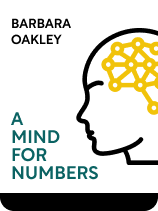

This article is an excerpt from the Shortform book guide to "A Mind for Numbers" by Barbara Oakley. Shortform has the world's best summaries and analyses of books you should be reading.
Like this article? Sign up for a free trial here .
What is interleaving? How can it help you avoid the potential pitfalls of overlearning?
Repetition is an important part of learning. However, it’s possible that too much recall and practice of new information and skills can be counterproductive. The solution is interleaving, which is the use of contrasting techniques in order to master one technique.
Read more to learn how interleaving is the antidote to overlearning.
The Pitfalls of Overlearning
“Overlearning” is when you continue to practice something after you have attained competence with it. Oakley acknowledges that overlearning a skill can enable you to perform it automatically, but she cautions that overlearning can be counterproductive, especially when combined with poor study or teaching methods.
According to Oakley, excessive repetition becomes tedious, and tedium can produce emotional stress, which prevents your brain from making certain types of neural connections. As an example, she recounts how her seventh-grade math teacher forced her to endlessly recite multiplication tables, largely without explaining the underlying concept of multiplication. She resented this so much that she couldn’t learn the tables, despite all the repetition.
(Shortform note: It’s easy to see why Oakley would have reservations about overlearning that are specifically tied to its emotional impact based on her experience, but other researchers criticize overlearning simply from an efficiency standpoint. In one study, researchers compared retention over time between students who overlearned material and students who didn’t. They found that the overlearners retained more information for about one week, but after that, the difference diminished. Nine weeks later, students who practiced overlearning couldn’t remember the material any better than students who didn’t practice overlearning. Based on this result, the researchers argued that overlearning is inefficient because it takes significant time and doesn’t provide long-term benefits.)
Use Interleaving to Connect Content With Context
To avoid the potential pitfalls of overlearning, Oakley recommends you practice interleaving instead of overlearning. What is interleaving? It’s when you practice solving a variety of problems requiring different solution methods to contrast them with a solution method you have just learned. According to Oakley, this promotes mastery of a technique because the use of contrasting techniques for other problems teaches you when to use the new technique, instead of only learning how to use it.
For example, suppose you have just learned the “trigonometric substitution” technique for finding the integral of a function. This technique works well on certain types of functions, but not on others. As you practice your integration skills, you mix in a few problems that lend themselves better to “integration by parts” or other integration methods that you have learned, in addition to practicing trig substitution. As a consequence, you gain a greater understanding of when to use trig substitution versus other techniques.
| The “interleaving effect” that Oakley describes was first discovered around 1986, based on studies of techniques for teaching badminton serves. It was soon applied to other sports, but the effects of interleaving on academic performance were not studied until the 21st century. In 2015, a study of the effectiveness of interleaving for learning mathematics concluded that interleaved study promotes better retention, especially in the long term: Specifically, students who were assigned interleaved review problems scored better on tests than students whose review assignments did not include interleaving. And if the test was delayed for 30 days, average test scores dropped about eighteen percentage points for students who did not practice interleaving, but only six percentage points for students who practiced interleaving. These researchers attributed the effectiveness of interleaving to the fact that it gave students more practice identifying different types of problems and matching them to the appropriate solution methods. This is consistent with Oakley’s assertion that interleaving promotes mastery of a technique by teaching you when to use it. |

———End of Preview———
Like what you just read? Read the rest of the world's best book summary and analysis of Barbara Oakley's "A Mind for Numbers" at Shortform .
Here's what you'll find in our full A Mind for Numbers summary :
- How to make math and science intuitive
- Strategies for remembering complex concepts more easily
- How to build good study habits and avoid procrastination






